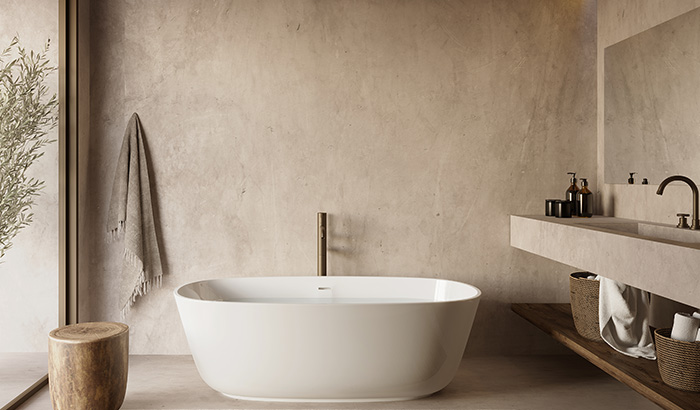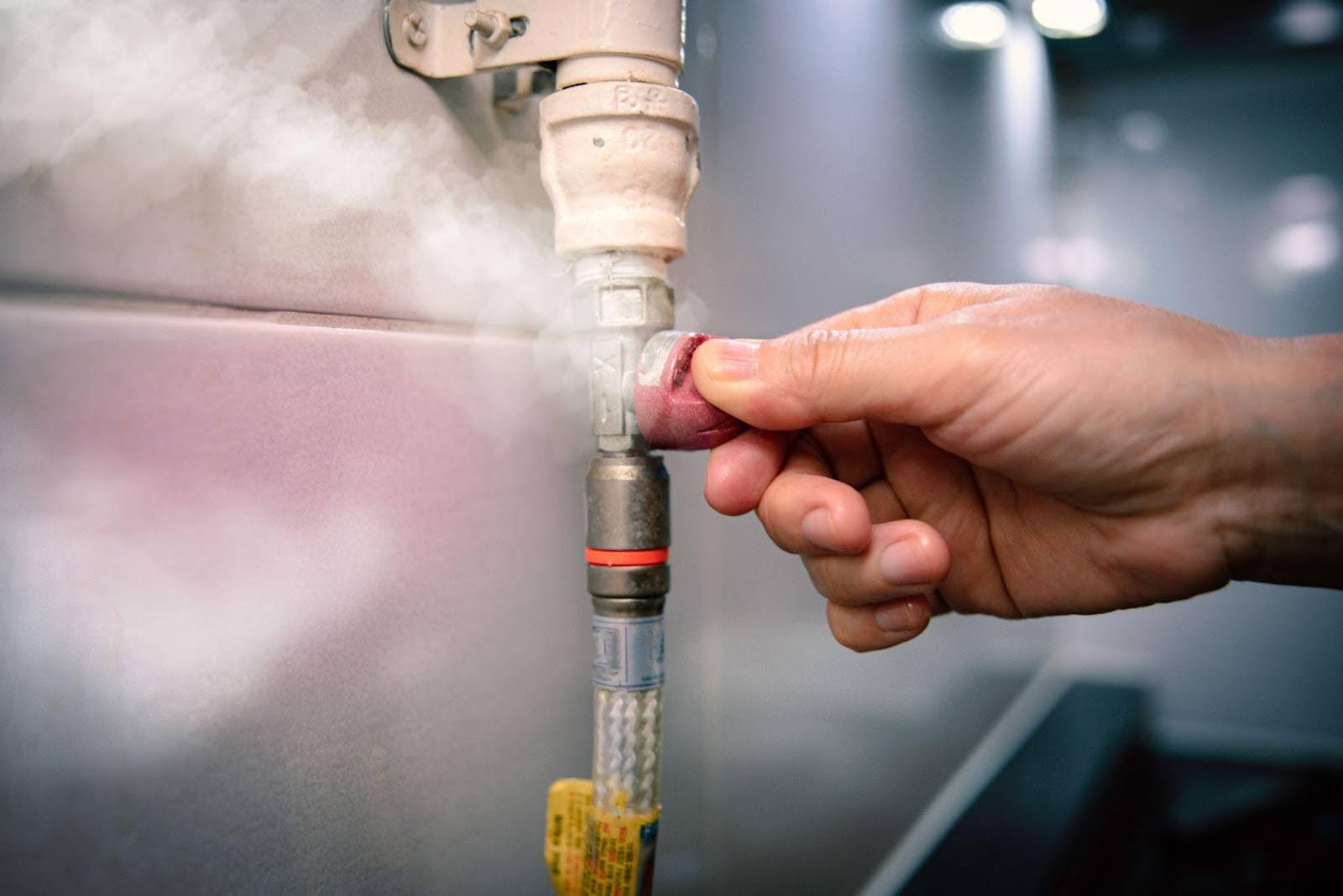If you’ve found yourself staring at a disheartening crack or blemish in your bathtub, you’re likely filled with questions. Is it repairable? Do you need a completely new tub? What are the costs involved?
In this article, we’ll dive into these questions and more, demystifying the world of tub repair. We aim to arm you with the knowledge you need to make informed decisions, whether dealing with minor scratches or more concerning cracks.
Let’s begin by answering the main question first.
Can a Cracked Bathtub Be Fixed?
Yes, a cracked bathtub can usually be fixed, depending on the severity and location of the crack. It can be repaired because most bathtubs are made from materials receptive to specific bonding agents or fillers.
Now that you know that a cracked bathtub can be fixed, let’s take a closer look at some tub repair facts that will be helpful if, in fact, you do need to fix a cracked bathtub:
- Acrylic Repair Process: When dealing with acrylic tubs, repair kits usually contain a special adhesive formulated from polymers that match the chemical structure of acrylic. When cured, this creates a solid bond, effectively sealing small to moderate cracks or holes.
- Structural Reinforcement: Professionals might install stainless steel reinforcement plates beneath the tub for severe cracks. These plates are often anchored to both the tub and the floor, adding structural integrity and preventing future cracks from forming.
- Epoxy Resins: Epoxy resins are the preferred repair materials for porcelain and ceramic tubs. This two-part system involves mixing a resin and hardener, resulting in an extremely tough, water-resistant repair when cured.
- Multi-Component Adhesives: Some advanced repairs use a multi-component adhesive system with both a base adhesive and a catalyst. When mixed, they trigger a chemical reaction that produces a bond far stronger than single-component alternatives.
- Sanding Techniques: After the adhesive has cured, professionals usually employ a tiered sanding technique. Starting with coarse sandpaper and moving to finer grits, this process ensures a seamless, mirror-smooth finish, making the repaired area almost indistinguishable from the rest.
- Pre-Cleaning Requirement: It’s essential to thoroughly clean the cracked area before initiating the repair. Professionals often use specialized cleaning agents that remove dirt, soap scum, and microscopic residues that could inhibit effective bonding.
- Anti-Fungal Additives: Some repair materials include anti-fungal additives to discourage mold and mildew growth around the repaired area, thereby enhancing the longevity and hygiene of the repair.
- Temperature Sensitivity: Professional-grade bonding agents often require a specific temperature range for application. The ambient temperature must be maintained for optimal curing, which professionals can ensure by using specialized equipment.
- Nano-Technology in Adhesives: Cutting-edge bonding agents now use nano-technology, where microscopic particles interlock at a molecular level, ensuring an even more robust and long-lasting repair.
- Advanced Color Matching: With technology like spectrophotometers, professionals can analyze the existing color of the tub and mix a custom-colored bonding agent that is an exact match, ensuring a seamless repair.
- Localized Heating Systems: In colder environments, professionals may use localized heating systems like heat lamps to maintain the necessary ambient temperature for the bonding agent to cure effectively.
- Water Drainage Assessment: A water drainage test is typically conducted to assess any changes in the tub’s draining efficiency after the repair. This ensures the repair has not inadvertently affected the tub’s drainage capabilities.
- Surface Primer: A surface primer is often used to enhance adhesion before applying the primary bonding agent. This additional layer provides a superior bonding surface for the repair material.
- Pressure Testing: After the repair and water drainage test, some professionals will also perform a pressure test. This involves sealing the tub and introducing air or water at pressure to ensure the repair can withstand everyday strains of everyday usage.
- Abrasion-Resistant Finishes: An abrasion-resistant finishing coat may be applied after the repair. This layer protects the repair from physical damage from scrubbing or using abrasive cleaning agents.

- Chemical Resistant Sealants: Some repairs are finalized with a sealant layer specifically resistant to household chemicals, ensuring the repair doesn’t deteriorate due to cleaning agents.
- Touch-Sensitive Coatings: For a more luxurious feel, professionals can apply touch-sensitive coatings that replicate the feel of the original material, ensuring that tactile differences do not betray the location of the repair.
- Quick-Cure Options: Fast-curing bonding agents are available for commercial settings or situations where the bathtub needs to be used quickly. These can be cured in as little as an hour, although they may come at a premium cost.
- UV-Cured Adhesives: Ultraviolet-cured adhesives are used for some repairs, particularly in hotel or commercial settings. These adhesives cure almost instantly when exposed to UV light, reducing downtime.
- Recalibration of Sloping: In some instances, a crack can alter the natural slope of a tub to facilitate drainage. Professionals may correct this by using leveling compounds during the repair process.
- Certified Adhesive Systems: Always look for professionals who use certified adhesive systems. These are typically tested and approved by relevant industry bodies, guaranteeing their effectiveness and safety.
- Substrate Repair: The substrate (the layer beneath the visible surface) may also need repair for cracks that go all the way through. Professionals can address this by injecting a high-density foam to restore the substrate’s integrity.
- Vacuum-Assisted Bonding: Some advanced repair techniques use a vacuum to remove air bubbles from the bonding agent during application, resulting in a more solid and uniform repair.
- Acoustic Testing: In luxury or specialized tubs, an acoustic test may be carried out after the repair to ensure that the sound characteristics of the tub (e.g., when filling with water) remain unchanged.
- Heat Resistance Testing: Professionals may perform heat resistance tests to ensure the repair material can withstand hot water temperatures without degrading.
- Scratch Test: After the repair has fully cured, a scratch test using various materials (e.g., metal, plastic) may be conducted to assess the durability of the repair.
- Aesthetics Guarantee: Some professional services offer an aesthetics guarantee, promising that if the repair is visible from a certain distance, they will redo it at no extra charge.
- Solvent Tests: Post-repair, professionals may conduct solvent tests using common household cleaning chemicals to ensure that the repair material does not dissolve or degrade.
- Eco-Friendly Materials: Increasingly, professionals are offering eco-friendly repair materials that are low in volatile organic compounds (VOCs), making them safer for both the environment and your home.
- Extended Warranties: After a professional repair, some services offer extended warranties covering the repaired area, providing customers with peace of mind about the longevity of the repair.
By understanding these aspects, you’ll be far better equipped to either make an informed DIY repair or understand what a professional offers when you opt for expert tub repair services.
Should a Professional Fix a Cracked Tub?

Hiring a professional to fix a cracked tub offers multiple advantages, ranging from quality of workmanship to time-saving benefits. Here are some reasons why it might be a good idea to opt for professional help:
- Expertise and Specialized Knowledge: A professional repairperson has undergone years of training and gained hands-on experience in the field. This equips them with intricate knowledge about various tub materials, bonding agents, and techniques that can effectively address the problem, providing a long-lasting solution.
- Guaranteed Quality of Repair: Professionals typically have access to high-end repair materials that are industry-certified for their strength and durability. Coupled with their expertise, they can deliver a meticulously executed repair that is functional and visually indistinguishable from the original tub surface.
- Efficiency and Time-Saving: Time is money, and professionals understand the value of both. Utilizing advanced tools, like precision applicators and digital measuring devices, they can quickly assess the damage and complete the repair within a short period, allowing you to resume using your tub sooner.
- Safety Assurance: A DIY approach can expose you to harmful fumes from the repair materials, potential slip-and-fall hazards, or even worse, electrical risks if water and electricity are nearby. Professionals adhere to strict safety protocols, ensuring that neither you nor your property is at risk during the repair.
- Workmanship Guarantees and Warranties: Many professional repair services offer comprehensive warranties, ensuring that if the repair fails or deteriorates within a specific period, they will return to fix it at no extra cost. This provides a peace of mind you simply can’t get with DIY repairs.
- Holistic Structural Assessment: Beyond just fixing the crack, a professional can thoroughly inspect your tub and its underlying structures. They can identify any hidden issues, such as weakening of the floor beneath the tub or plumbing problems, offering preemptive solutions that can save you money in the long run.
- Liability Insurance: Professional repair services often carry liability insurance, which means that if they inadvertently cause additional damage to your property, their insurance will cover the costs. This protects you from incurring extra expenses.
- Custom-Tailored Repair Strategies: Every tub differs in material, age, and quality. Professionals can custom tailor their repair techniques and materials to match the specific type of your tub, ensuring an aesthetically pleasing and durable repair.
- Preservation of Property Value: A botched DIY repair job can be an eyesore and may even devalue your property. On the other hand, professional repairs are usually seamless. They can maintain or even improve the overall value of your home, which is especially important if you’re planning to sell in the future.
- Cleanup and Disposal: Repairing a bathtub often generates waste materials, such as old caulk or pieces of the damaged tub. Professionals usually handle the disposal of these materials in compliance with local regulations, saving you the hassle.
- Building Code Compliance: Professional repair services are usually up-to-date with local building codes and regulations. This ensures that your repaired tub meets all legal requirements, preventing potential issues should you decide to sell your home or undergo an inspection.
- One-Stop Comprehensive Service: Professional services often offer additional services like plumbing checks or faucet repairs. They can identify and fix related issues in a single visit, providing a more holistic solution.
- Long-Term Cost-Effectiveness: While the upfront costs of hiring a professional may be higher, the long-lasting results often mean you won’t have to pay for additional repairs or replacements for a long time, ultimately saving you money.
- Stress Reduction: A cracked tub can be a significant source of stress. Delegating the repair to a professional can remove the uncertainty and anxiety, allowing you to focus on other aspects of your life.
- Quality Assurance Protocols: Most professionals adhere to standardized quality assurance checklists they go through before, during, and after the repair, ensuring each step is completed to the highest possible standard.
- Superior Materials: Professionals often have access to commercial-grade materials that may not be readily available to the general consumer. These materials are often more durable and effective, providing a better-quality repair.
- Thorough Post-Repair Inspection: After the repair, professionals usually conduct a thorough inspection, including water and stress tests, to ensure that the tub is fully functional and that the repair will hold up over time.
- Environmentally Responsible Options: With an increasing focus on sustainable practices, many professional services now offer eco-friendly repair materials that are low in VOCs and kinder to the environment.
Opting for a professional repair service for your cracked bathtub is a smart choice for immediate and long-term benefits. It provides a safer, quicker, and more effective solution.
Fix Your Bathtub Woes Now with Salisbury Plumbing
Don’t let plumbing issues disrupt your comfort. With Salisbury Plumbing, you can rely on skilled and licensed plumbers for all your bathtub needs. From clogs and faucet repairs to complete overhauls, we deliver top-quality results.
Skip the stress of DIY bathtub fixes and trust Salisbury Plumbing for expert solutions. We prioritize customer satisfaction and quality workmanship.
Contact us today at 385-503-5488 or use our online form. Our team is ready to assist you professionally.
toto slot






